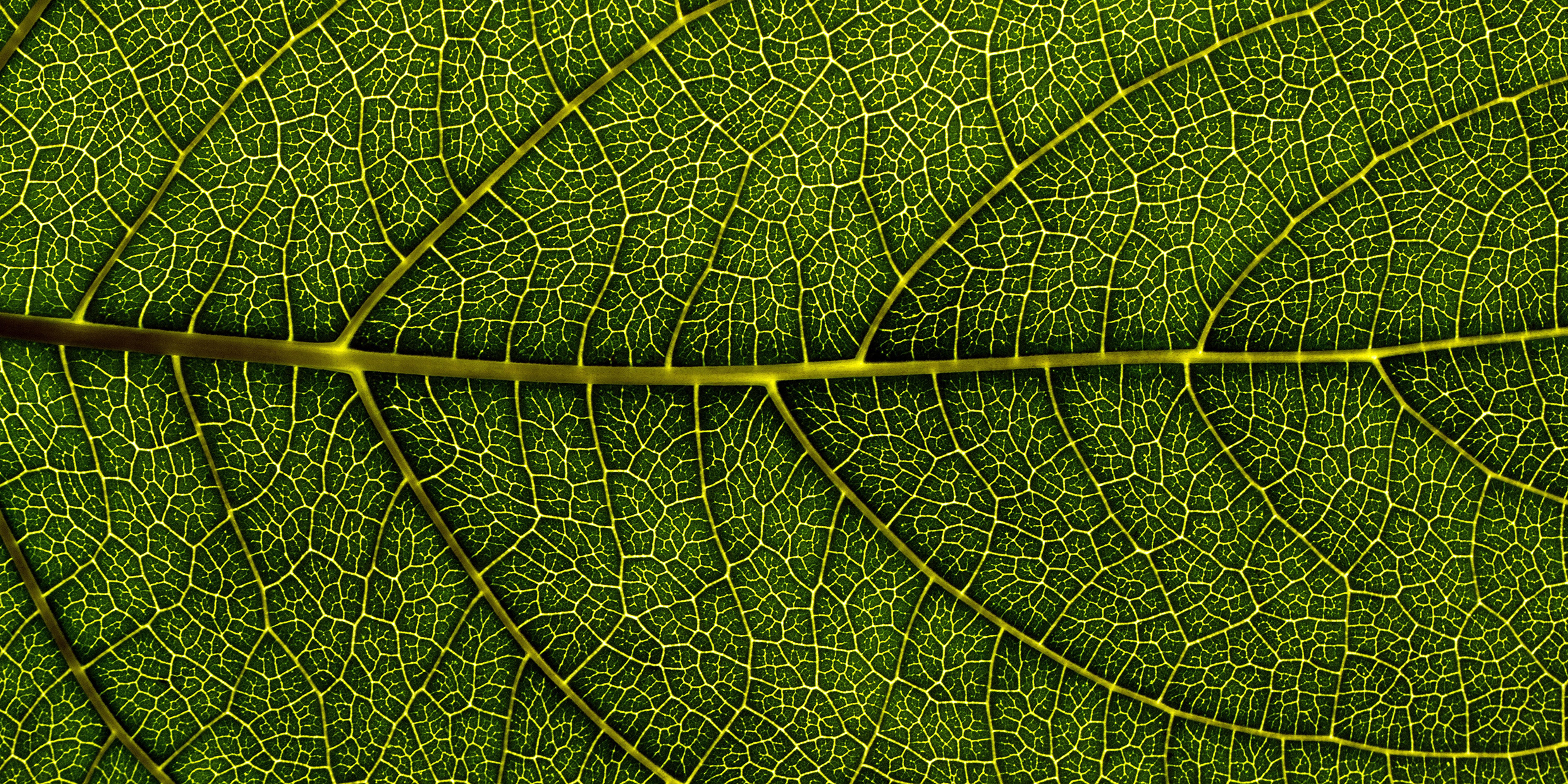Originally published 8 November 1999
A small green leaf picked up on the college quad. It attracted attention by being small and green in a sea of autumnal colors. I was on my way to the Science Building, so I stepped into a biology lab and slipped the leaf onto the stage of a dissecting microscope.
Now if I were the superintendent of schools in my town, or any town, I would place a few good, college-quality dissecting microscopes in every classroom and make do with fewer computers. Almost every kid these days has access to a computer at home, but few have the chance to use a good microscope. A dissecting microscope is best because it requires no particular skill to use it. What magical worlds are opened for view.
In this case, it was a vista of the wonderful network of plumbing and pipes that carries water and nutrients to every cell of the leaf. Polygons, sub-polygons, and sub-sub-polygons of ever finer veins: a fractal geometry of distribution that resembles nothing so much as the road system of a great suburban sprawl.
How much alike, I wondered, is the network of veins in one maple leaf to that in another? I stepped outside and picked two similar leaves. The basic architecture was the same; from the stem at the base of each leaf five main veins radiated towards the five main lobes of the leaf. The placement of the principle offshoots from these main veins was more or less the same.
But from there on everything diverged, until on the smallest scale of distribution the patterns of polygons seemed essentially random. Under the highest power of the microscope, the two leaves were as different as two snowflakes.
I was face to face with one of the great mysteries of nature. The Greeks called it the problem of the One and the Many: How do things stay the same in the midst of essentially infinite variation?
Nature is a tension between the universal and the particular, the One and the Many. If it were not for the One, science would be impossible. Indeed, there would be no such things as nouns and verbs. We could not say “maple,” or “leaf,” or “network,” or “vein.” And if it were not for the Many, that one small green leaf would not have stood out in that sea of color, every leaf would be a clone of every other, and there would be no need for adjectives or adverbs.
“The ultimate All is not one thing, but two,” wrote the naturalist Joseph Wood Krutch, in an essay called The Colloid and the Crystal. In Krutch’s duality, the crystal represents the One, the inanimate perfection of repetition, identical atoms in lockstep arrangement. The colloid stands for the Many, the shapeless gob, the oozing slime, the flowing essence of life.
Physics is the science of the One. Every proton or electron is utterly identical to every other proton or electron. Every quartz crystal vibrates at the same frequency. Every comet follows a course that is inexorably constrained by a simple gravitational law. Some physicists are even bold enough to imagine that they might discover a “theory of everything,” the ultimate and final description of the One.
Biology, on the other hand, is the science of the Many, or at least as close to the Many as one can get and still do science. Krutch puts it this way: “The astronomer can tell where the North Star will be ten thousand years hence; the botanist cannot tell where the dandelion will bloom tomorrow.” There is something creative and rebellious about life; it strains against the bonds of the One, striving to bring forth the particular. There are no selves in physics; in biology, every creature is a self.
That small green leaf picked up in the quad announced its individuality by being small and green when every leaf around it was large and scarlet. Some unpredictable fluke controlled its growth and caused its fall from the tree, the same anarchical disposition at the core of things that causes the tiniest veins of the leaf to grow as variably as fingerprints.
Some scientists — “reductionists” — believe that the Many is an illusion, that behind the apparently infinite variety of nature there are a finite number of fixed laws, the hidden face of the One. Other scientists — “wholists” — believe the Many can never be reduced to the One, not even in principle, and that any successful science of complexity must inevitably contain a measure of chaos — not exactly nature throwing the dice, but unpredictable nevertheless.
Like Joseph Wood Krutch, my own inclination is that there is an irreducible tension in nature between the One and the Many — the colloid and the crystal — and that we still have something profound to learn about how life and consciousness are allied to the Many.
I can’t prove it, but I believe that the infinitely variable pattern of tiny veins within the recognizable pattern of the maple leaf will never be explained by physics. A different kind of science will be required, a science of emergent qualities of complex systems. Only when such a science is in place will we understand the creative and tangled exuberance of life.



